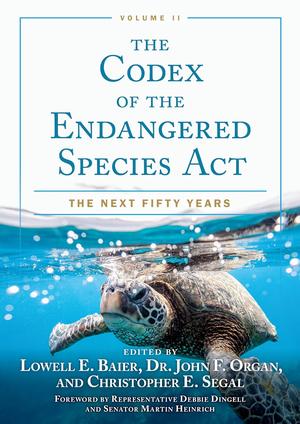Attorney Baier follows up the examination of the ESA from Volume I: The First Fifty Years (2023) with a look toward the future. Since the passage of the comprehensive ESA legislation in 1973, the listing and delisting of different species as endangered has led to discussions, court cases, and political disputes. This volume, over the course of 14 chapters, features figures from academia and government contributing ideas about where the ESA is going and how to improve its impact. One chapter specifically looks at how to “change the culture within the professional wildlife community” to further the goals of conservation. Suggestions include implementing “pay for success” programs, such as those seen with water-quality programs in some states. Another chapter examines lessons from the 2012 conflict over the endangered dusky gopher frog, which numbered just 135 individuals in the entire state of Mississippi. Another engaging chapter is devoted to a practical workshop on the ESA, overseen by the University of Wyoming and Texas A&M University, that and aims “to develop…tangible action items to improve species conservation in the United States at the state and federal level.” Although the use of highly technical terminology tends to be limited, not every chapter will appeal to the casual reader; one, for instance, includes a passage about a resource equivalency analysis allowing “plan proponents to convert estimated take of individual species into equivalent habitat metrics to inform mitigation commitments.” But the book also digs into specifics about the ESA that laypeople might not otherwise encounter, as in the aforementioned discussion of the dusky gopher frog; the authors assert that several lessons can be gleaned by analyzing the fight over frog habitats and the resulting 2018 U.S. Supreme Court case, including “how to best encourage habitat creation and restoration.” Overall, this lengthy work offers insightful views on the importance of wildlife and the means to ensure its appropriate protection.

